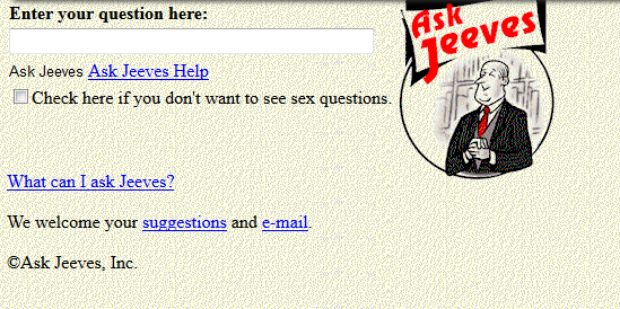Digital innovation continues to disrupt industries at lightning speed. Today’s organizations are transforming their entire business – from strategy to operations, technology to culture – to better deliver value to their customers. In 2017, we compiled the top 10 trends leaders needed to know when it came to their digital transformation journey. In this 10-week blog series, we’ll further explore each trend and address how you can continue to modernize your business for success.
Before the age of the Internet and search engines, writing a history report required a lot more legwork. You had to physically go to a library to do your research. (Anyone remember Encyclopedia Britannica?)
Of course, you need multiple sources to write a paper. Back then, the best way to find other references was to dive into the card catalog and search by subject, author, or book title.
I’m dating myself here, but the birth – and early mass adoption – of the Internet changed everything. It initially impacted me as far as school projects. My first exposure to the “world wide web” was during my days as a high school senior and then my college years. Anyone who had a dial-up connection – or access to Ethernet in your dorm – was getting familiar with the emerging possibilities online.
It started with my first email account and then quick adoption of online chat, like AIM (a.k.a. AOL’s Instant Messenger). I missed the boat on social media by a couple of years. (Facebook didn’t come to my university until after I graduated.)
Maturing Technologies and Its Impact
Fast forward 20 years, and these once-emerging technologies have all evolved. They are among the go-to resources in our lives, and never far out of reach on our mobile devices. Think about it:
- AIM has been replaced with text messages and messaging apps, such as Facebook Messenger.
- Email remains a primary communication channel. But brands and marketers have expanded its use to reach their customer base. Additionally, it’s a channel consumers can use for customer service.
- Search engines (or embedded search on websites) have certainly replaced trips to the library. It’s our go-to when we can’t recall a quick fact, or want to find the nearest restaurant or coffee shop. But search engines have even evolved – we can now access digital assistants on our phones (think Siri) or devices in our homes (think Alexa.)
Remember Ask Jeeves?
Before we were tempted to Google this or that, there was a search engine that quickly gained popularity in the early days of the Internet. Part of the appeal was that it catered to how people wanted to find things online – by asking questions.
AskJeeves.com, which debuted in 1997, stood apart from Yahoo! or Alta Vista because it “encouraged search engine users to field their curiosity in the form of a question.”
You could almost consider it one of the early forms of a virtual assistant. Garrett Gruener, the venture capitalist behind AskJeeves.com, had the brilliant idea to “humanize information-gathering online.” Rather than overwhelming users with pages of results that may or may not be relevant to a simple search, Ask Jeeves was a “more refined option” with Jeeves present near the search bar to serve as your “virtual concierge.”
Many of the queries were consumer-oriented – asking for the best eateries, plumbers, or hotels – while others sought the kind of information that required both urgency and specialized knowledge.
While no one had a crystal ball in 1997, the premise behind Ask Jeeves was spot on. You can see how it translated to the evolution of online experiences in the past 20 years. So, how does it relate to technologies and the digital experiences we know today?
Welcome to the Age of Smart Anything
Perhaps we take it for granted, but the rise of smart technologies like artificial intelligence (AI), chatbots, and the Internet of Things (IoT) continue to transform the way we live. The benefits they deliver have elevated our expectations as consumers. And, they are quickly changing how companies operate.
Adopting smart tools will soon be a must-have for enterprises to stay competitive in the marketplace.
Today’s solutions allow companies to gather and use data for creating a world-class customer experience for users across every channel. But to bring these experiences to life, you need smart technologies that can efficiently and cost-effectively deliver them.
How AI and Chatbots Can Transform Your Business
Implementing AI and chatbots to complement the post-purchase experience will allow you to scale your customer service. When executed well, they benefit customers with self-service options, allowing them to find answers or resolve issues quickly. This reduces time and costs so that your service reps are available to tackle more complex issues that customers can’t solve on their own.
When it comes to self-service, companies see the value of social messaging apps (like Facebook Messenger) or chatbots. Business Insider reports that 56 percent of businesses said engagement in these channels positively impacts their ROI, and 58 percent said they reduce customer service costs.
Additionally, a recent survey of U.S. Internet users reveals that the top two elements of a good online customer service experience include:
- Getting issues resolved in a single interaction
- Receiving a speedy and timely response.
As a result, leading brands are following customers onto social messaging platforms. In fact, 90 percent of businesses use Facebook to respond to service requests.
AI also enhances the service experience because it can quickly consume, analyze, and interpret structured and unstructured data. Machine learning, natural language processing, predictive analytics, cognitive computing, and signal services are all elements of AI that help drive more relevant and personalized experiences for your customers.
Transforming the customer experience is one of the many reasons why AI adoption is gaining ground within organizations. In 2018, AI initiatives rank among the top five priorities for CIOs. Gartner estimates that by 2020, 85 percent of CIOs plan to pilot AI programs through a combination of buy, build, and outsource efforts. That’s a significant uptick over a two-year period when you consider only 21 percent of CIOs are piloting AI initiatives today.
Not only can AI and chatbots improve the customer experience, but they can also positively impact other areas of your business. A recent Forrester report states:
AI will be employed across enterprises, doing everything from engaging with customers and employees to automating and improving large elements of the operation. The deployment of AI technologies will create significant value, as companies will be able to predict customer needs in near real time while optimizing operations and supply chains in the background. This transformative capability will further prepare companies to win, serve, and retain customers. The question is not just who will get there first, but who will do it right and best.
The Promise of IoT
The Internet of Things is quickly emerging as a leading source of data and business intelligence. Business Insider states that it’s “disrupting businesses, governments, and consumers and transforming how they interact with the world… the proliferation of connected devices and massive increase in data has started an analytical revolution.”
Companies are going to spend almost $5 trillion on IoT in the next five years.
More organizations realize the enormous potential for investing in IoT – from improving business processes and minimizing risks to enhancing customer experiences. Consider these examples:
- Manufacturing – developing connected products that inform the supply chain about predicted demand for aftermarket parts
- Transportation – connecting shipping vehicles with temperature sensors to ensure goods, especially food, arrive in safe condition
- Energy – sensors that monitor networks of oil/gas transport pipelines, valves, and pressure gauges to prevent leaks and contamination
- Healthcare – connecting medical machines and devices to systems that easily share patients’ data and images with their providers
The phenomenal market opportunity for IoT continues to grow. But there’s more to it than installing sensors on products or equipment and calling it “smart.”
What does all of this mean for your business?
The scope of applications for IoT solutions is still in its infancy. Your organization won’t benefit from adopting IoT solutions unless you’re thoughtful about the purpose and role that it plays.
Read about 50+ successful use cases across 11 major industries in The Why, What, and How of IoT. You’ll also learn the strategic process for implementing these solutions within your organization.
See the Full Picture with Contextual Intelligence
Massive volumes of data created every day provide the basis for contextual intelligence. A few quick facts to consider about Big Data:
- 10 billion mobile devices will be in use by 2020
- 294 billion emails are sent daily
- Google processes more than one billion searches each day
- On Facebook, more than 30 petabytes of user-generated data is stored, accessed, and analyzed
- Twitter users send more than 230 million tweets daily
In other words, the volumes of data will drive better use of data in context. But how?
Most major software vendors can use contextual intelligence to help users identify what works and what doesn’t. It’s especially important for companies that strive to deliver real-time personalization.
According to our Perficient Digital colleagues, a majority of companies are aiming to provide contextual personalization in near-real time. This is because it addresses masses of people visiting websites, and it’s easier to achieve.
Web content management vendors continue to refine personalization by injecting intelligence into their platforms. When you’re dealing with millions of page views, there are simply too many data points to analyze and determine the optimal path. With built-in intelligence, marketers can simply define an end result and a few parameters, and then let the system do the rest.
Bottom line – contextual intelligence will improve the ability for digital business leaders to make data-driven decisions.
The Next 20 Years: How Will Smart Anything Evolve?
Just as the dawn of the Internet has forever changed our world, the age of “smart” technologies will continue evolving and elevating our expectations as consumers. It’s hard to imagine what’s in store in the next 20 years when our current reality is having connected devices in our homes and using virtual assistants like Alexa.
Rest assured – one day we may look back on 2018 and be amused by how we used to ask Alexa to tell us the current time, get the weather forecast, or play our favorite song.





This is amazing. Thanks for enhancing our knowledge